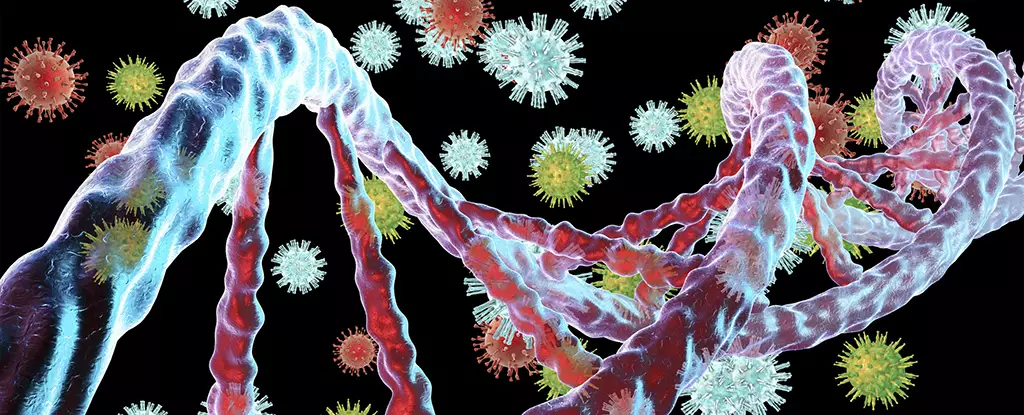The discovery of ancient viral remnants within the DNA of a single-celled organism has opened up new possibilities in understanding the role viruses have played in the evolution of complex organisms. This groundbreaking research, led by evolutionary biologist Alex de Mendoza Soler from Queen Mary University of London, sheds light on the potential impact of viruses on our genetic makeup. The findings suggest that viruses may have contributed genes that provided cells with advantageous traits for survival.
According to de Mendoza Soler, it’s like discovering Trojan horses concealed within the DNA of the Amoebidium. These viral insertions, while potentially harmful, are being controlled by the organism through a mechanism known as chemically silencing. Despite the constant attacks on its genome by giant viruses, the Amoebidium has developed a unique way to cope with these foreign genes, ensuring its survival.
The researchers uncovered that the base cytosine in the DNA of the Amoebidium is modified by an enzyme called DNMT1. This enzyme, commonly found in multi-celled organisms, is responsible for altering the genetic material in response to viral attacks. By modifying the DNA alphabet through 5-methylcytosine (5mC), the Amoebidium is able to silence the viral genes, preventing any detrimental effects on its survival.
While viruses have long been viewed as invasive entities, de Mendoza Soler’s team proposes a more nuanced understanding of the relationship between viruses and their hosts. The discovery of genetic material from giant viruses within the Amoebidium suggests a more complex story of adaptation and evolution. This coping mechanism allows the single-celled organisms not only to survive the viral attacks but also to incorporate beneficial genes into their lineage.
The study indicates that viral insertions may have played a significant role in the evolution of complex organisms by providing them with new genes. The diverse viral material found across different Amoebidia genomes suggests an ongoing and dynamic process of genetic exchange. This phenomenon challenges existing perspectives on the coevolution of viruses and their hosts and highlights the potential benefits of incorporating viral DNA into the host’s genetic makeup.
The presence of ancient viral remnants in the DNA of Amoebidium offers insights into similar processes occurring in humans and other mammals. Endogenous retroviruses, remnants of ancient viruses in our genetic code, are believed to have contributed to our evolutionary history. Previously dismissed as inactive remnants, these viral elements may have provided some advantage to our ancestors, enabling their preservation in our DNA.
The relationship between ancient viruses and evolution is a fascinating area of research that challenges traditional views on the impact of viral invasions. The discovery of viral remnants within the DNA of the Amoebidium sheds light on the complex mechanisms of genetic modification and adaptation that have driven the evolution of complex organisms. By unraveling the secrets hidden within our genetic heritage, we can gain a deeper understanding of the intricate interplay between viruses and their hosts in shaping the diversity of life on Earth.


Leave a Reply